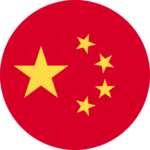
By Victoria Yvonne Bien-Aimé, Lucas Engel and Oyintarelado Moses
A combination of economic shocks from the COVID-19 pandemic and the policy shift to a greener high-quality Belt and Road Initiative (BRI) has translated into a substantial decline in large-scale Chinese loan finance to Africa in recent years.
New 2021-2022 data released in the Chinese Loans to Africa (CLA) Database, managed by the Boston University Global Development Policy (GDP) Center, demonstrates that China has entered a new state of lending to Africa, characterized by declining large-scale loans and changing lending practices.
The CLA Database is an interactive data project tracking loan commitments from Chinese development finance institutions (DFIs), commercial banks, government entities and companies to African governments, state-owned enterprises and regional institutions.
From 2021-2022, five Chinese lenders signed 16 loan agreements totaling $2.22 billion with eight African governments. This marks two consecutive years of lending to Africa below the $2 billion threshold, with 2021 seeing seven loans totaling $1.22 billion and 2022 witnessing nine loans worth $994.48 million.
The largest commitment of $670.74 million was allocated to Benin for the Glo-Djigbé International Airport, while the smallest loan was for $14.74 million allotted to co-finance Phase II of Senegal’s Hann Bay Depollution Wastewater Treatment Project with a French DFI, Agence Française de Développement (AFD).
While the volume and quantity of lending has decreased, it has overall added to the vast amount of cumulative Chinese financing for development projects in Africa over the years, which the CLA Database estimates to be 1,243 loans provided by 39 Chinese lenders worth $170.08 billion to 49 African governments and seven regional institutions from 2000-2022.
The Export-Import Bank of China (CHEXIM) and the China Development Bank (CDB) accounted for 79 percent of loan commitments to the region, with 72 percent directed towards vital infrastructure projects in energy, transport and information and communications technology (ICT) sectors. Top borrowers include Angola, Ethiopia, Kenya, Zambia, Egypt, Nigeria, South Africa, Cameroon, Sudan and Ghana.
At $170.08 billion, China’s estimated total lending from 2000-2022 is 64 percent of the World Bank’s $264.15 billion and almost five times the African Development Bank’s (AfDB) $36.85 billion in sovereign loans to Africa.
A comparison of average loan figures between the pre-pandemic years (2017-2019) and the pandemic years (2020-2022) revealed a significant 37 percent drop, with averages falling from $213.03 million to $135.15 million. The pandemic years also saw a sharp reduction in loan quantity, plummeting from 184 to 32 commitments.
Data from 2021-2022 also revealed the rise of new regional borrowers. West African nations, historically with limited borrowing activity relative to their counterparts in Southern and Eastern Africa, became significant participants. In particular, Senegal, Benin and Côte d’Ivoire demonstrated notable borrowing activity during this period.
In terms of sectors, financing during 2021-2022 focused on sectors spanning transportation, environment, ICT, education, defense, water/sanitation/waste, as well as industry, trade and services sectors. Loans targeting the ICT sector and environmental projects, such as Senegal’s Diamniadio Data Center Restructuring project and the Ferlo Region Ecosystem Resilience Project (PREFERLO), signaled China’s potential shift towards fostering more beneficial social and environmental outcomes.
What explains the drop in the number and amount of loan commitments in recent years?
Increasing rates of debt distress among some top African borrowers has likely cooled demand for more loans. In 2021, after the pandemic triggered global economic shocks, 18 percent of African countries were in debt distress, with an additional 40 percent classified as being at high risk of debt distress. In sub-Saharan Africa, which holds most of Africa’s top borrowers of Chinese loans, several countries have grappled with the challenge of managing unsustainable debt levels and experienced sovereign downgrades.
China’s changing domestic, global and regional priorities are other considerable factors. Declining real estate values coupled with increased government spending during the pandemic have caused revenue shortfalls for local governments, placing a greater burden on public finances. China’s aging population, rising youth unemployment and geopolitical tensions have also created pressure to redirect public funds to address domestic issues. Concomitantly, China has also transitioned to a “small and/or beautiful” lending approach and initiated a high-quality China-Africa cooperation strategy.
In the future, there are likely to be more loans for under $50 million geared towards more beneficial social and environmental impacts. To align future loans with a green BRI and high-quality standards, China can enhance accountability through transparent accounting and co-financing with multilateral banks. African nations, benefiting from China’s presence and growing number of development partners, can strategically negotiate with various partners to achieve optimal financing deals.
Despite reduced lending, areas such as trade, agriculture, integration with the African Continental Free Trade Agreement and supporting Africa’s energy transition are becoming prominent areas of engagement. The upcoming 2023 Belt and Road Forum in October and the 2024 Forum on China-Africa Cooperation (FOCAC) meetings will further reveal the extent of shifts in China’s contributions to Africa’s development.










